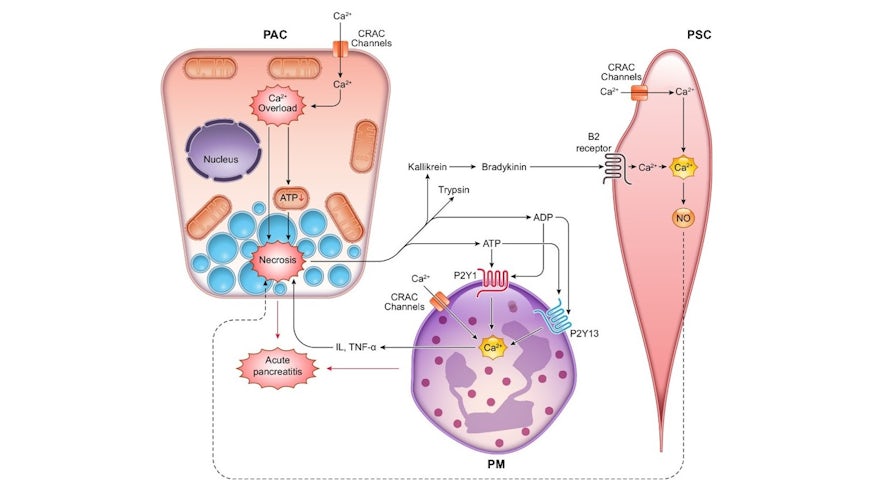Radical new understanding of acute pancreatitis gives hope for more effective prevention of pancreatic cancer
7 September 2021

Research led by the School of Biosciences has transformed understanding of the mechanism underlying this potentially fatal disease, which is a significant factor in the development of pancreatic cancer
Acute pancreatitis, for which there is currently no specific, authorised treatment, is most commonly caused by gallstone complications or alcohol abuse.
The new concept of acute pancreatitis differs markedly from the conventional view that it is a disease of acinar cells, the small elements that produce a variety of digestive enzymes in the pancreas. It shifts the focus to the interactions between the acinar cells and two other adjacent cell types in the pancreas - the pancreatic stellate cells and pancreatic macrophages.
Vicious interactive circles, driven by excessive inflow of calcium ions in all three cell types cause increasing disintegration of cells and the release of cytokines and other agents. This leads to potentially fatal cytokine and bradykinin storms, resembling those seen in severe cases of COVID-19.
The team’s work showed that in all three cell types, calcium ions flow into the cell interiors through the same type of channel and that the opening of this channel type can be effectively reduced by a small molecule inhibitor.
Research Lead, Professor Ole Petersen CBE FRS, said: “The publication this month of our new pancreatitis concept represents the culmination of our work over the last decade to define the precise mechanism underlying the development of acute pancreatitis. Our new, evidence-based concept has for the first time led to a rational treatment, which is currently being tested in clinical trials in the US.”
Published in the journal Physiological Reviews, the research was carried out in collaboration with Bogomoletz Institute of Physiology in Kyiv, Ukraine and the School of Medicine at Jinan University in Guangzhou.